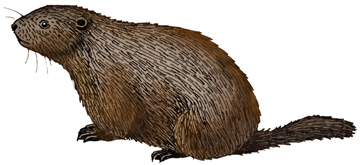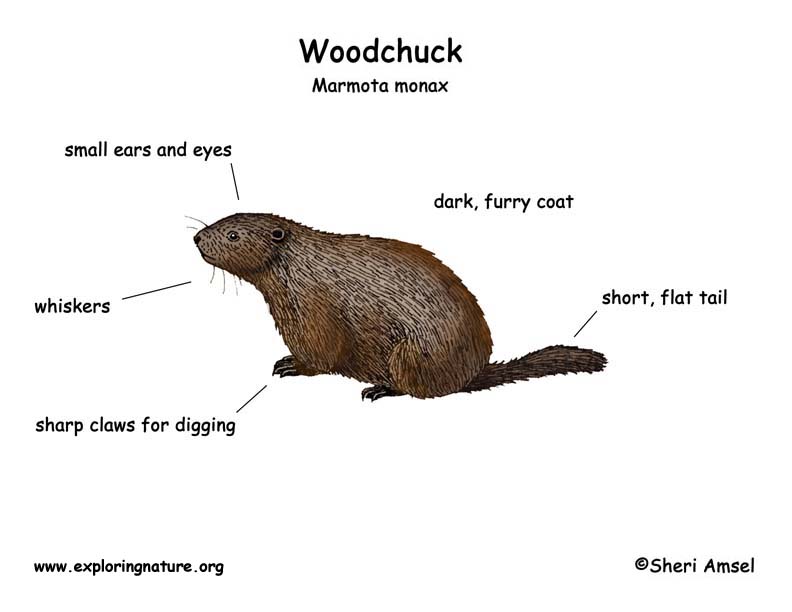

Woodchucks (also called groundhogs) are found in southern Canada, Alaska, Northwestern and Northeastern United States west up to the prairie and south to Alabama.
They live in burrows in fields, hedgerows and on the edge of forests. They have adapted to do well in farmlands and pastures as well.
The largest member of the squirrel family, they vary in weight from 6-12 pounds (males are larger). They can be yellow to brown with frosted hair tips and a rounded body, bushy tail and short, strong legs for digging. The woodchuck’s front teeth grow continuously throughout their lives.
They live life mostly on the ground and den underground. They build extensive burrows with many rooms and exits. They have separate rooms for food and sleeping and waste. They are active during the day (diurnal) in the summer and hibernate in the winter. They live alone, except when mating or raising young.
They eat mostly plants (herbivores), but sometimes eating insects, eggs and snails. Woodchucks make a range of noises including a high-pitched whistle, so are sometimes called "whistle-pigs." They are true hibernators, sleeping from October to March or April. They live alone except when mating or females with young.
Predators include foxes, coyotes, dogs and man.
Females are pregnant for 30 days (gestation) and have 2-7 young, usually in May.
Woodchucks can live up to 6 years in the wild. They are listed as Lower Risk - least concern.
Kingdom: Animalia
Phylum: Chordata
Subphylum: Vertebrata
Class: Mammalia
Order: Rodentia
Suborder: Sciuromorpha
Family: Sciuridae
Subfamily: Xerinae
Genus: Marmota
Species: Marmota monax
When you research information you must cite the reference. Citing for websites is different from citing from books, magazines and periodicals. The style of citing shown here is from the MLA Style Citations (Modern Language Association).
When citing a WEBSITE the general format is as follows.
Author Last Name, First Name(s). "Title: Subtitle of Part of Web Page, if appropriate." Title: Subtitle: Section of Page if appropriate. Sponsoring/Publishing Agency, If Given. Additional significant descriptive information. Date of Electronic Publication or other Date, such as Last Updated. Day Month Year of access < URL >.
Amsel, Sheri. "Woodchuck" Exploring Nature Educational Resource ©2005-2024. December 13, 2024
< http://exploringnature.org/db/view/377 >

